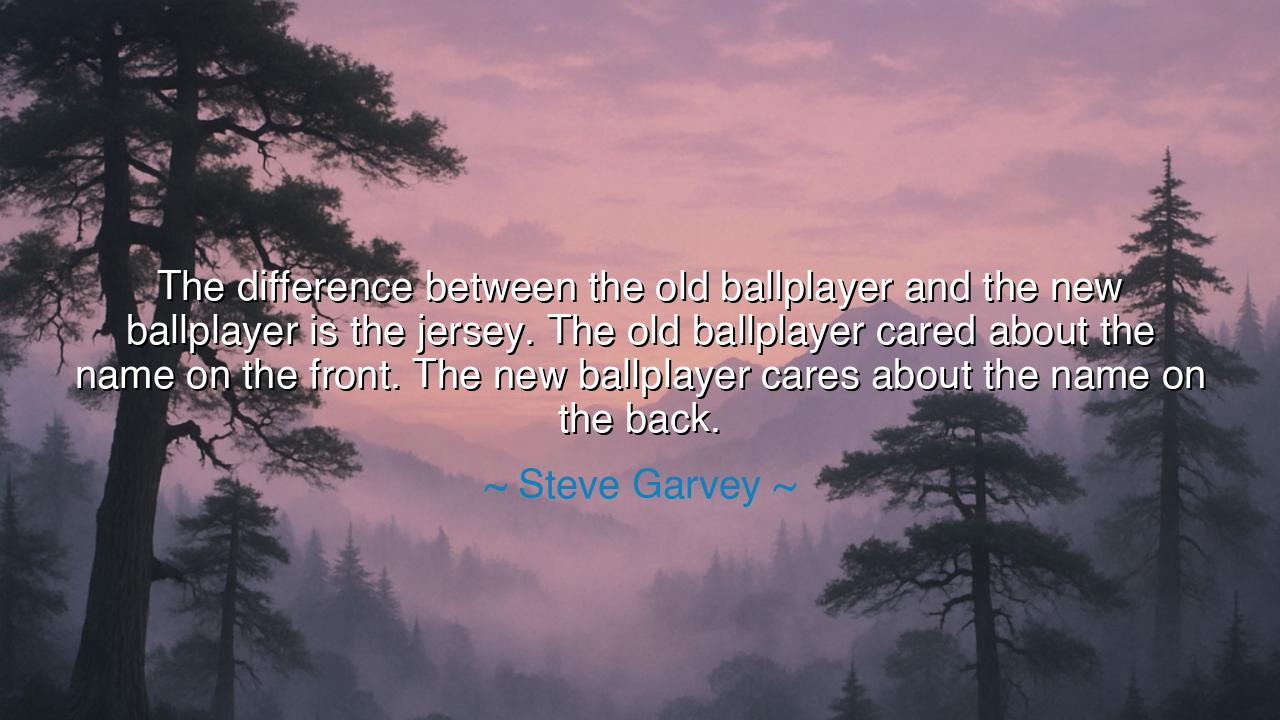
The difference between the old ballplayer and the new ballplayer
The difference between the old ballplayer and the new ballplayer is the jersey. The old ballplayer cared about the name on the front. The new ballplayer cares about the name on the back.






In the long saga of the diamond, where men have battled with bat and glove beneath the summer sun, the voice of Steve Garvey carries with the weight of both memory and lament. He spoke these words as both witness and judge: “The difference between the old ballplayer and the new ballplayer is the jersey. The old ballplayer cared about the name on the front. The new ballplayer cares about the name on the back.” This is not simply a statement about sport, but a parable of loyalty, of selflessness, and of the shifting tides of human devotion.
The name on the front is the mark of the team, the banner under which men march together. It signifies unity, sacrifice, and the willingness to lay aside one’s pride for the sake of the whole. In the ancient days of the game, the ballplayer was not only a craftsman of the bat but a servant of the team’s cause. He bore his city’s honor, his fans’ hope, his teammates’ trust. Victory was not his alone, but theirs together.
But the name on the back—that is the mark of the individual. It is the emblem of self, of pride, of the pursuit of personal glory. In this, Garvey speaks of a shift: from an age where men bled for the collective to an age where men guard their own star, their contracts, their statistics. This is not condemnation without understanding, for the world itself has changed. The market prizes the name on the back; fame rewards the singular rather than the whole. Yet Garvey reminds us that something precious is lost when the collective is sacrificed to the individual.
The ancients knew this truth well. Recall the Spartans at Thermopylae, who stood as one body, shield to shield, their names forgotten in the dust of history, their unity immortalized in legend. They fought not for personal glory, but for the land of Greece, for the polis, for the name on the front. Compare this with the fall of empires where selfish rulers sought their own legacy above their people’s good—these are the cautionary tales of the name on the back. In both sport and life, the fate of groups depends upon whether men live for the whole or for themselves.
Yet there is also tragedy woven in Garvey’s words. For the modern ballplayer is not without reason. He has seen the frailty of loyalty in an age of trades, contracts, and shifting allegiances. To cling only to the name on the front is to risk betrayal by owners and managers who treat players as pieces on a board. Thus, the rise of the self was in part the defense of survival. But Garvey’s lament is clear: when the name on the back eclipses the front, the spirit of the game—the spirit of unity—is dimmed.
What, then, is the lesson for us who are not ballplayers? It is this: in all things, balance the self with the whole. Seek personal excellence, yes, but remember that your glory is magnified when joined to the success of your family, your community, your team. Do not live only for the name on the back, for the self perishes quickly. Live also for the name on the front—the greater cause, the people to whom you belong, the purpose larger than yourself.
So let Garvey’s words be carried forth as counsel: the name on the front is the soil from which the name on the back draws its strength. Care for the whole, and you shall find your own name remembered. Abandon the whole for self alone, and both the front and back will fade into dust. Live, then, as the old ballplayer lived—with loyalty, unity, and devotion to something greater than yourself.






AAdministratorAdministrator
Welcome, honored guests. Please leave a comment, we will respond soon